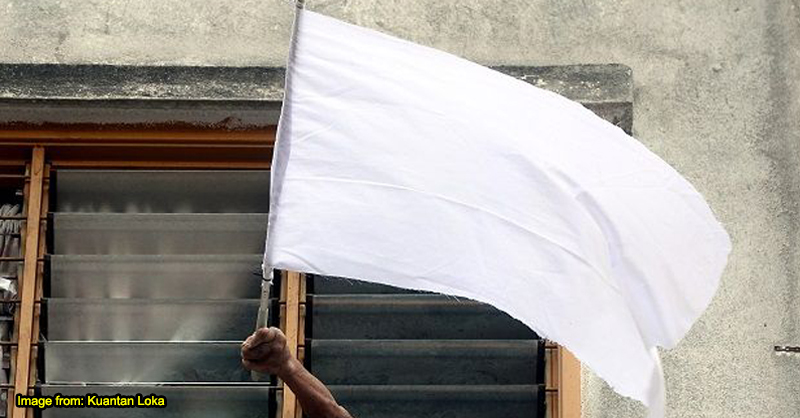The oddly legit reason why they used dustpans to clear Bukit Jalil’s flooded field

- 201Shares
- Facebook176
- Twitter4
- LinkedIn5
- Email5
- WhatsApp11
Last weekend, Malaysia’s football team lost 2-1 to Bahrain in the AFC Asian Cup Qualifiers at the National Stadium in Bukit Jalil. A few of us from Cilisos went to see the game, and to be fair, Malaysia played really well despite being the underdogs.

Unfortunately, the news that gained the most attention was the condition of the pitch, and the stadium’s rag-tag efforts to clear it of floodwater. As heavy rain poured on the night, the pitch became water-logged, and workers began to use penyodoks (dustpans), rubber hoses, and even wooden panels to try and save the grass in time for the game.
https://www.tiktok.com/@ikakul/video/7108016205864127770?referer_url=https%3A%2F%2Fwww.therakyatpost.com%2F&referer_video_id=7108016205864127770&refer=embed
However, this did not help the situation much, and the floodwater undoubtedly affected the game negatively, making for slippy-slidey gameplay and the ball getting stuck in the mud a few times. So this actually got us thinking: despite the criticism, did the field workers actually do the right thing by using penyodoks to clear the field?
Well, for this, we looked at how other countries’ sporting bodies handle floods, and it turns out that…
‘Sweeping’ flooded fields was kinda the right move, but at the wrong time
So yeah, it was kinda the correct idea, but not quite. Why? We’ll get to that.
According to sports body Sport England (who works with the English FA, among others):
“Try to avoid water standing stagnant for long periods by redistributing water with brushes and pumps and use a hand fork to spike the ground to assist in infiltration.” – Sport England
To their credit, we did also see them spiking the ground with rakes, so it does look like they got that part right as well.

This act of ‘sweeping’ the pitch is also important to remove sediment and debris; according to Sports Turf Managers Association in America:
“Removing sediment from sand-based rootzones is especially important to prevent the rootzone from being capped by a clay or silt layer.” – Sports Turf Managers Association
They actually do prescribe the use of equipment such as tractors and hand tools (such as rakes, brooms, shovels, vacuums and rubber hoses) to do the dirty deed, which isn’t too far off what the Bukit Jalil workers used. Mainly the problem seems to be the fact that they did not have enough of the appropriate equipment, hence why they resorted to dustpans and wooden panels.
BUT, removing debris appears to be more of a post-flood solution rather than a mid-flood one. In fact, doing so mid-flood could actually damage the playing surface:
“Any attempt to remove it when it is still wet and the ground is soft could lead to greater problems.” – Gordon Jaaback, international turfgrass agronomist

And for the task of removing debris specifically, Sport England prescribes the use of specialist equipment:
“Use machinery to clear heavy debris where possible. Safe manual handling procedures should be observed.” – Sport England
So in short, not a totally terrible idea, but possibly wrong time, and not enough of the right tools. But hey, we aren’t groundsmen. Interestingly, we found out later that…
The stadium’s management did not order the removal of rainwater
This one was quite bizarre to be honest. After the whole fiasco, the Malaysian Stadium Corporation (PSM) claimed that they didn’t order the workers to remove rainwater, and that such a move was ‘unnecessary’ as the stadium’s drainage system had supposedly cleared up the water prior to the game’s start (which is what it should have done):
“At 7.30pm after the downpour yesterday. the pitch was covered with water but at 8pm, it had subsided, so they need not have used shovels and cardboard to remove the water. By doing this, the grass would be damaged.” – Mohd Faidz Sanusi, CEO of PSM
We’ll be honest, this statement left those of us who attended the game with raised eyebrows, because, well, the pitch was definitely still bogged down throughout the game, especially down the wings. It was certainly enough for the away coach to point out:
“We’re in a country that loves the game. The fans deserve better competition. It’s not too much to request for better playing conditions. The organizers need to know that we deserve better conditions for short competitions like this.’’ – Helio Sousa, Bahrain coach

We’re not sure if there was some kind of miscommunication involved, or if PSM is simply shifting responsibility, but the fact of the matter remains: the National Stadium was nowhere near the standard required for an international competition. Just ask Lionel Messi, who refused to play at Bukit Jalil due to poor pitch conditions when FC Barcelona toured Malaysia in 2014:
https://www.tiktok.com/@almalik677/video/7108354191281671450?is_from_webapp=1&sender_device=pc&web_id=7072210107450721793
On the bright side, the National Stadium is due for a makeover very soon
Given the sorry state of the National Stadium, it’s a good thing the big bucks are being pumped into its improvement, especially from Malaysian football’s star patron Tunku Mahkota Johor (TMJ), who’s agreed to belanja some high-quality Zeon Zoysia grass for the stadium. But of course, TMJ being TMJ, His Royal Highness could not resist throwing some shade at the Football Association of Malaysia (FAM) following the Bahrain game.
View this post on Instagram
But hey, we’re all for wanting our country to do well, especially when it comes to the most popular sport in Malaysia. Because one thing that cannot be doubted is that Malaysia’s football team has world-class support, so it’s the least that the authorities could do to provide a decent playing surface for our Harimau.
- 201Shares
- Facebook176
- Twitter4
- LinkedIn5
- Email5
- WhatsApp11



